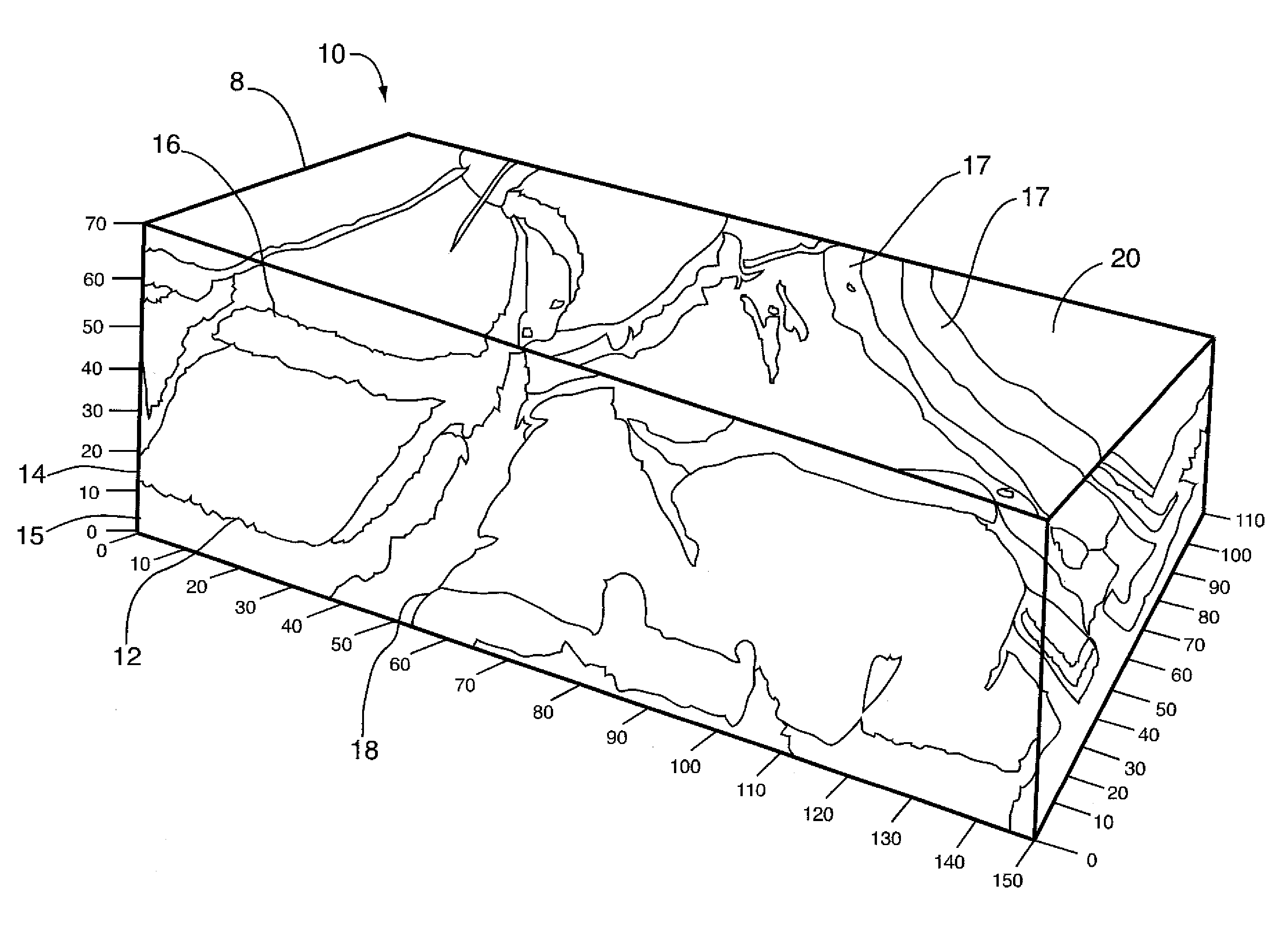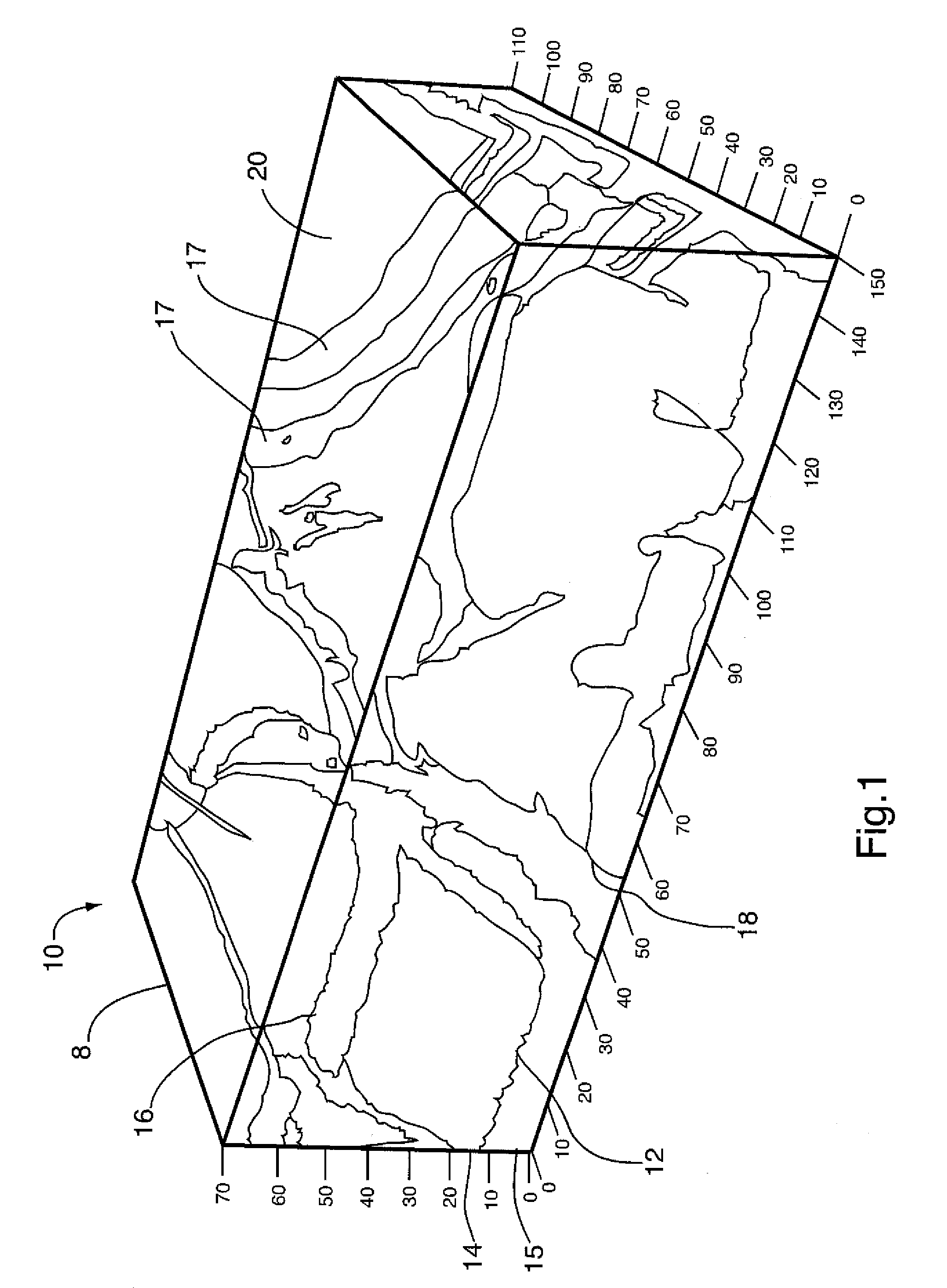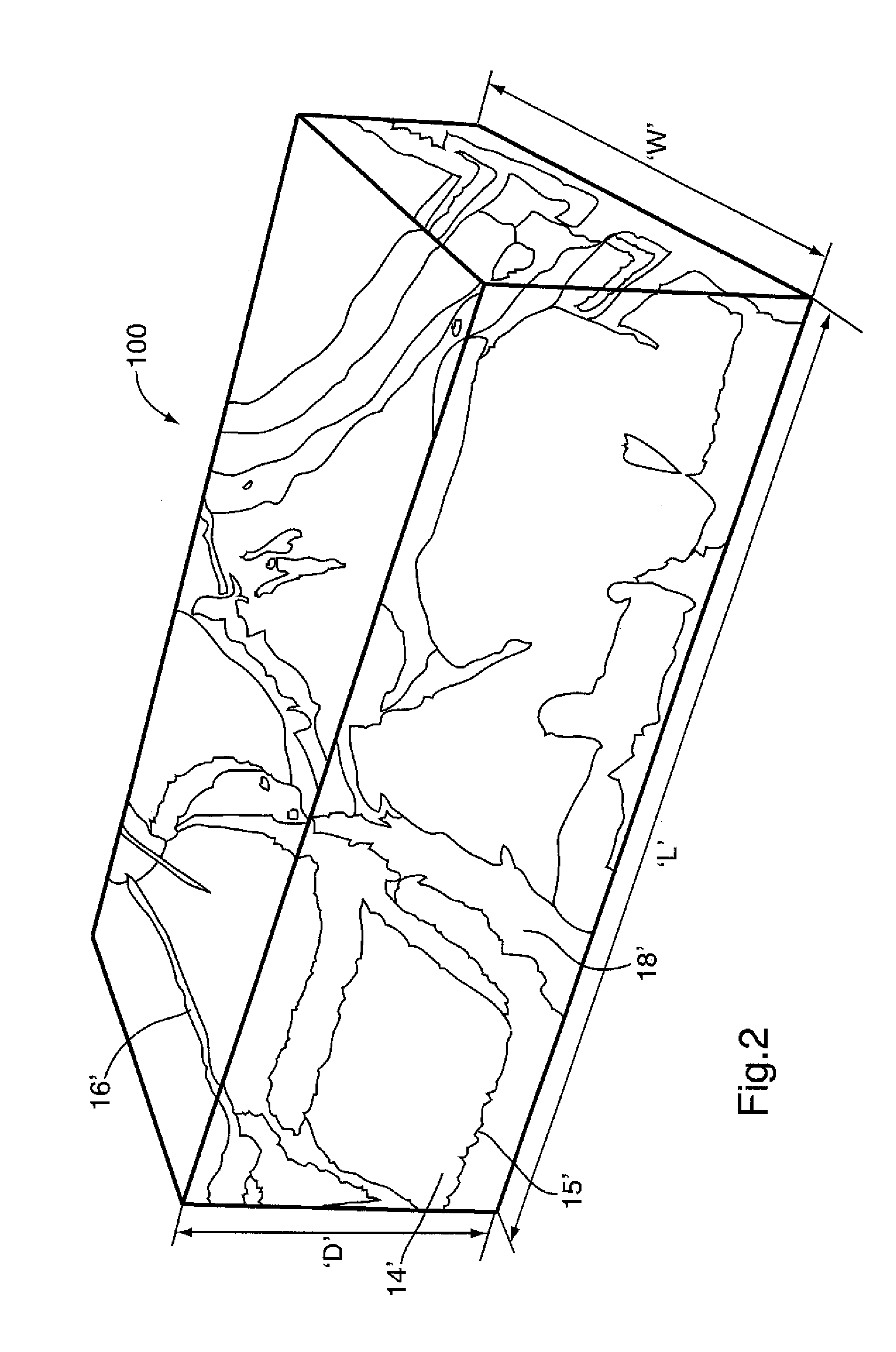Method for creating a 3D model of a hydrocarbon reservoir, and method for comparative testing of hydrocarbon recovery techniques
a hydrocarbon reservoir and 3d model technology, applied in the field of 3d model of hydrocarbon reservoirs, can solve the problems of complex and heterogeneous geological and petrophysical characteristics of carbonate reservoirs, inability to completely predict reservoir performance using various recovery techniques, and difficulty in modeling reservoirs via computer software models, etc., to achieve real cost savings, physical testing relatively inexpensively, and the effect of reducing the cost of operation
- Summary
- Abstract
- Description
- Claims
- Application Information
AI Technical Summary
Benefits of technology
Problems solved by technology
Method used
Image
Examples
Embodiment Construction
[0071]FIG. 1 shows a 3D perspective view of a portion 8 of an hydrocarbon-containing formation (reservoir) 10, showing a hydrocarbon-containing layer 12 within such formation 10 and various additional carbonate layers 13, 14, 15, 16, which typically are of different composition, density, porosity, permeability and wetability, such different layers 13, 14, 15, 16 in FIG. 1 indicated by different shading.
[0072]While the entire formation may be of an undulating, irregular curvilinear shape, the portion 8 of formation 10 may, for analytic purposes, be of a prismatic shape, which in FIG. 1, for illustrative purposes, is of dimensions 150 m×110 m×70 m (length×width×depth). Such prismatic shape may be chosen for ease of dividing formation 10 into different smaller-sized portions 8.
[0073]As seen from FIG. 1, such formation 10 may possess various fracture fault lines 17, and also may possess various water-containing seams 18.
[0074]Data and information as to various physical characteristics o...
PUM
| Property | Measurement | Unit |
|---|---|---|
| thickness | aaaaa | aaaaa |
| thickness | aaaaa | aaaaa |
| pore size volume | aaaaa | aaaaa |
Abstract
Description
Claims
Application Information
 Login to View More
Login to View More - R&D
- Intellectual Property
- Life Sciences
- Materials
- Tech Scout
- Unparalleled Data Quality
- Higher Quality Content
- 60% Fewer Hallucinations
Browse by: Latest US Patents, China's latest patents, Technical Efficacy Thesaurus, Application Domain, Technology Topic, Popular Technical Reports.
© 2025 PatSnap. All rights reserved.Legal|Privacy policy|Modern Slavery Act Transparency Statement|Sitemap|About US| Contact US: help@patsnap.com



